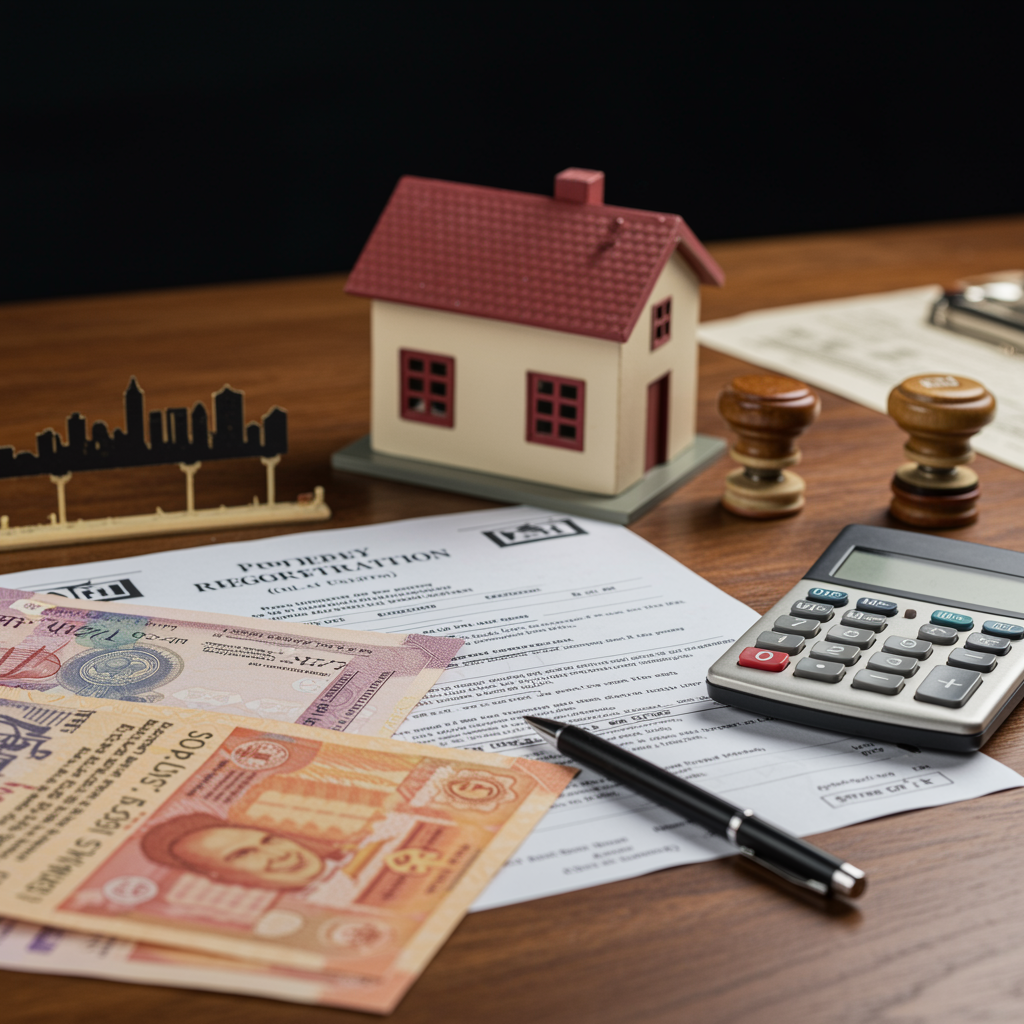When buying or registering property in Delhi, understanding stamp duty and registration charges is critical. These fees form a major part of the transaction cost and can vary depending on several factors. This guide walks you through the key rates, the process, important documents, exemptions, and tips all based on the latest official and industry data.
1. What is Stamp Duty & Registration Charges?
- Stamp duty is the tax you pay to the state government when a property is transferred (sale, gift, lease, etc.).
- Registration charges are the fees for submitting the deed and registering the change of ownership with the sub-registrar.
- Together, these costs legalise the transaction and protect your ownership rights.
2. Current Rates in Delhi (2025)
2.1 Stamp Duty Rates
For a sale/conveyance deed in the National Capital Territory of Delhi (NCT Delhi) region:
- Male buyer → 6% of the consideration or circle rate (whichever is higher).
- Female buyer → 4% of the consideration or circle rate.
- Joint (male & female) ownership → 5%.
In special areas:
- In the New Delhi Municipal Council (NDMC) area: Male 5.5%, Female 3.5%, Joint 4.5%.
- In the Delhi Cantonment Board area: Flat 3% for all buyers.
2.2 Registration Charges
- A flat rate of 1% of the consideration amount or circle rate, whichever is higher, plus a small pasting fee (₹100).
- Example: If the property value is ₹50 lakh, registration fee = ₹50,000 + ₹100 pasting fee.
3. What Affects Your Stamp Duty & Registration Fee?
Several factors can impact how much you ultimately pay:
- Property value (actual consideration) vs the circle rate (the minimum official rate) the higher of the two is used.
- Location of the property (NDMC area, cantonment, other zones) special rates may apply.
- Gender of buyer (male/female/joint) for stamp duty.
- Type of deed/transaction (sale, gift, lease, power of attorney) different charges may apply.
4. Step-by-Step: How to Pay & Register
- Visit the official Delhi Property Registration Portal for e-Stamping or authorised bank/vendor for payment.
- Choose or calculate the correct stamp duty based on property value, buyer type, location.
- Make the payment via e-Stamp, net banking, debit card, NEFT/RTGS etc.
- Obtain the e-Stamp certificate.
- Fill out the property registration forms and submit at the local Sub-Registrar Office (SRO) along with documents.
- Pay the registration charge (1% + ₹100 pasting fee) and complete the registration.
- Obtain a receipt/acknowledgment and ensure the deeds are properly handled.
5. Documents You Must Submit
Key documents typically include:
- Sale deed (original + copies) or relevant transfer deed.
- Identity proof of buyer and seller (Aadhaar, PAN, passport, voter ID).
- Property documents: title deed, encumbrance certificate, NOC (if required).
- Payment receipts for the stamp duty & registration fee.
- Property valuation / circle rate evidence.
6. Exemptions & Concessions to Know
- Certain properties under government housing schemes may qualify for reduced duties.
- Women buyers may get special benefits under applicable schemes in the state.
- Senior citizens or persons with disabilities may enjoy concessions (check latest circulars).
7. Why These Charges Matter
- Accurate payment and registration ensure your ownership is legally binding you avoid future disputes or nullification risks.
- Financial institutions (for home loans etc) often require proof of registration and duty payment before sanctioning loans.
- Under-valuing the transaction or evading duty can lead to penalties or legal issues.
- The costs are substantial; planning these upfront helps in budgeting the true cost of buying property in Delhi.
8. Tips & Best Practices
- Always check the circle rate for the area before calculating duty; if the consideration amount is lower than circle rate, duty will be calculated on the circle rate.
- Use the official stamp duty calculator on the revenue department site to compute accurate estimates.
- Keep proof of payment, receipts and registration documents safely they will be needed for future sale, loans, or mutation.
- Consult a legal expert or real-estate advisor when special cases arise (gift deed, lease, power of attorney, multiple owners).
- Be aware of any recent government notifications or changes in rates states may revise duty or registration charges.
Conclusion
When purchasing or registering a property in Delhi, it’s essential to factor in both stamp duty and registration charges. As of 2025, male buyers generally pay 6% stamp duty, female buyers 4%, and joint ownership 5% with special zones and conditions modifying these rates. Registration charges are around 1% of the property value plus a small fee. Proper payment, documentation and registration safeguard your ownership and reduce legal risk. By following the step-by-step process and using official tools like duty calculators, you can budget and complete the registration smoothly.
Disclaimer: This blog has been written exclusively for educational purposes. The information mentioned are only examples and not recommendations. It is based on several secondary sources on the internet and is subject to changes. Please consult an expert before making related decisions.





